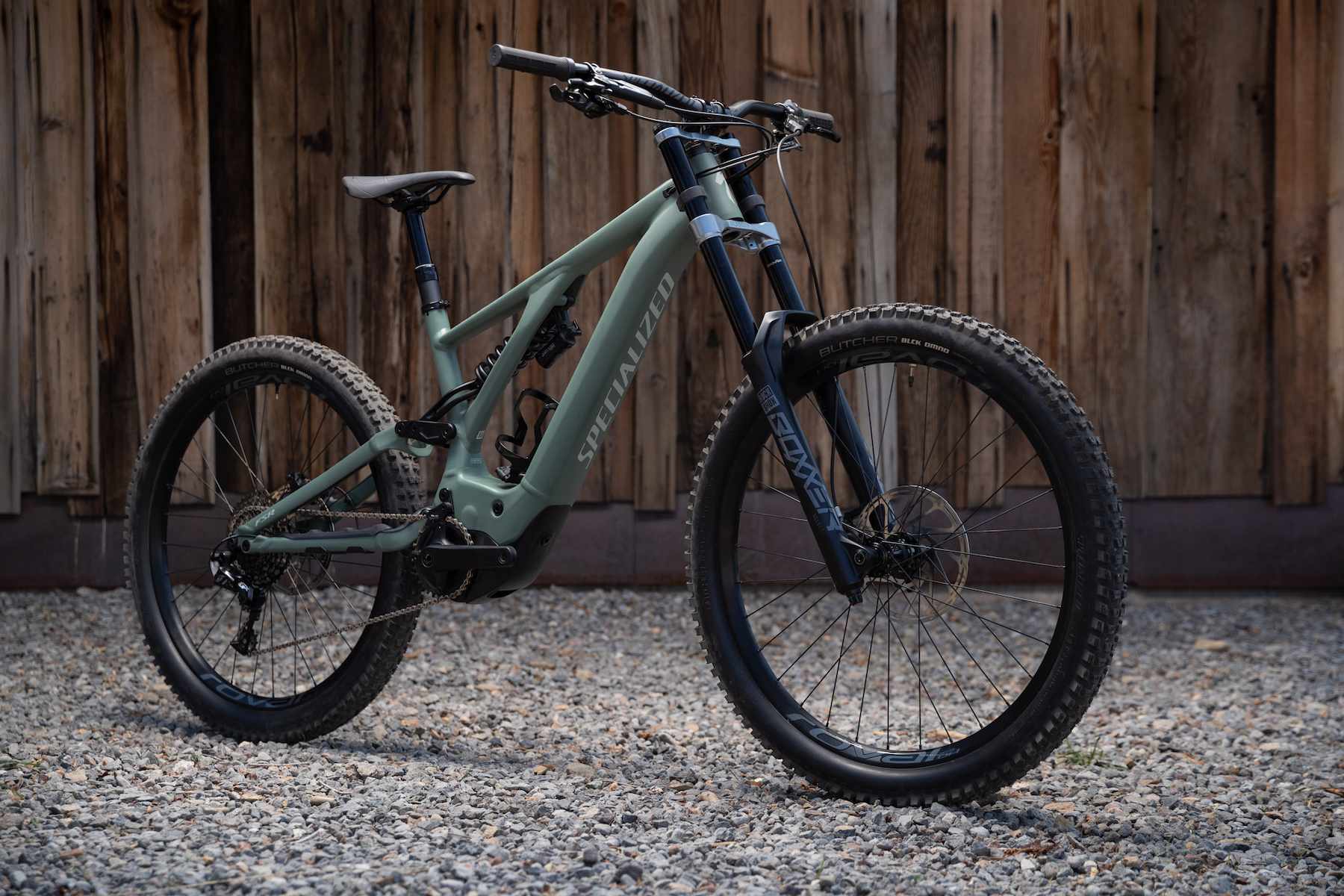Specialized unveils the 2nd generation Turbo Kenevo e-MTB for 2020
The original Kenevo debuted back in 2017 as a 180mm travel self-shuttling electric mountain bike. Specialized admits that the masses weren’t really asking for such a big travel e-MTB at the time, but it didn’t take long for riders to realise the Kenevo’s potential – particularly for those those who don’t live near a chairlift.
The first generation Kenevo had room for improvement though. With many pushing it well beyond just general trail riding, Specialized noticed that riders modifying the bike with dual crown forks, and replacing the flimsy 6Fattie plus-tyre setup with narrower, but burlier tyre casings.
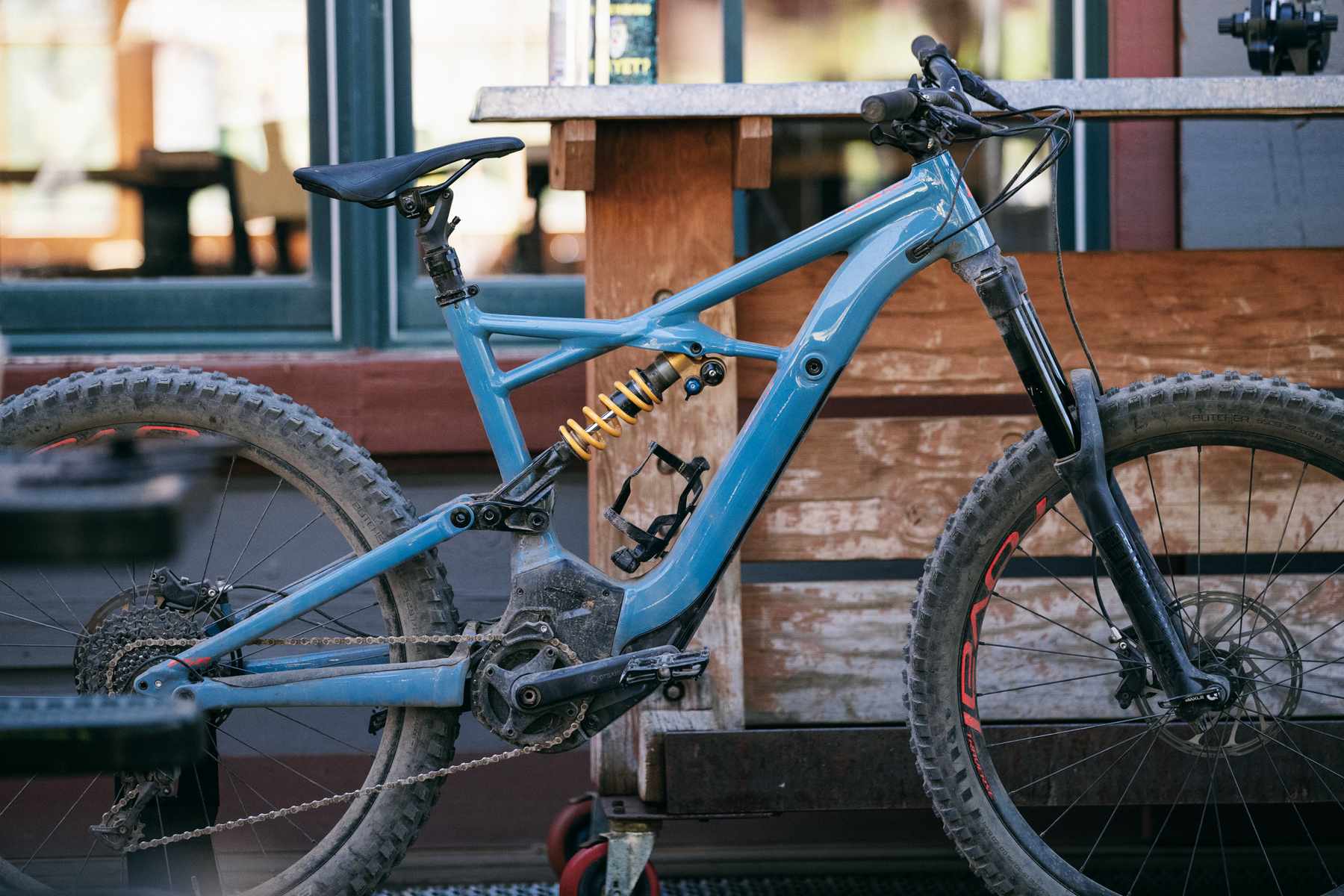
Of course last year the new Turbo Levo came out too, which brought forward significant improvements in geometry, suspension and chassis stiffness thanks to its new Sidearm frame. It also brought advances in both battery and motor technology that offered smoother and quieter performance in a smaller and lighter package.
With those lessons in hand, Specialized’s engineers turned their collective hands towards the big travel Kenevo. The goal? To create the most capable e-MTB possible. A bike that would be faster in really rocky and technical alpine terrain, while having more range than the original version.
And this behemoth, is the result.
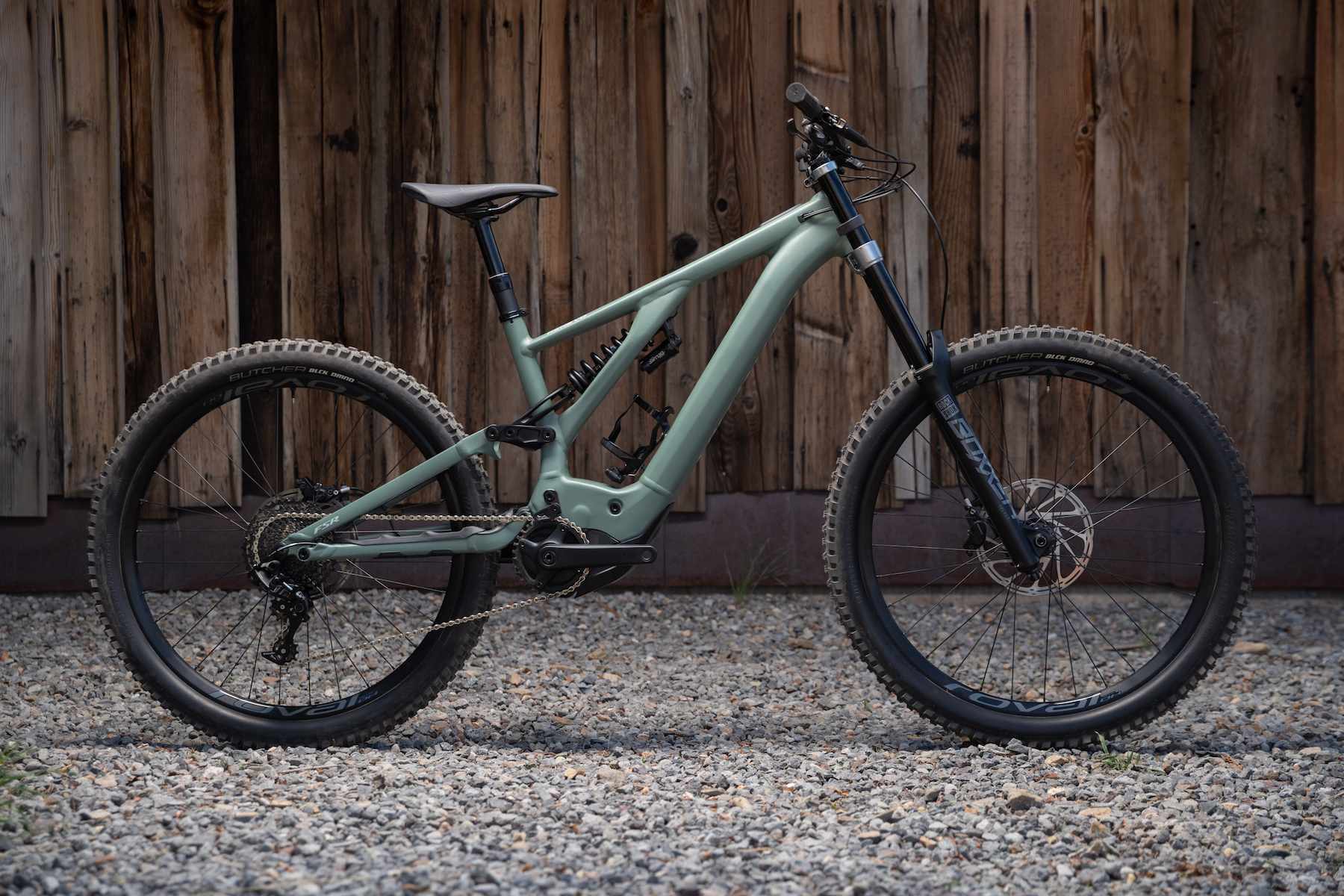
An Absolute Unit Of An e-MTB
The fundamental ingredients that baked the original Kenevo into such a popular cake haven’t changed too much. Suspension travel on the 2020 Kenevo remains at 180mm front and rear, though the new frame has been brought up to date by being made longer and slacker.
There’s a coil-sprung shock on the back, and the FSR suspension design has been subtly altered to provide a more rearward axle path that supposedly mirrors that of the new Enduro. Oh, and the Expert model also comes equipped with a dual crown Boxxer fork on the front, which looks totally badass.
Like the original, the 2020 Kenevo is rolling on 27.5in wheels, and not 29in wheels like the new Enduro and Demo. Specialized’s e-MTB Product Manager, Buck, told us during the launch that they were conscious of the Kenevo becoming too big and unwieldy, so they decided to stick with more nimble 27.5in wheels. Thankfully the flimsy plus tyres are gone though, and in their place are sturdy 2.6in tyres equipped with the new reinforced BLK DMND casing.
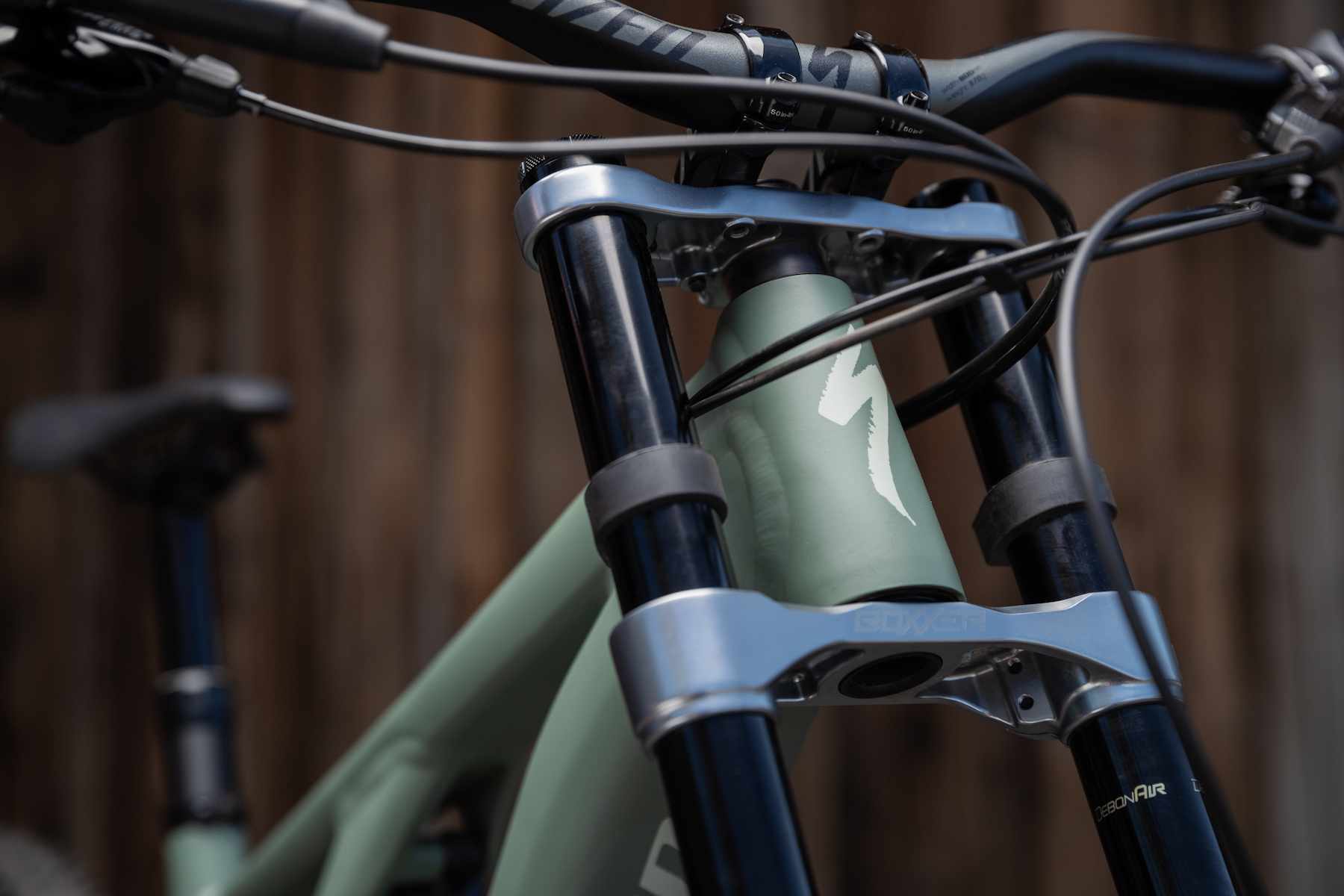
For those who still prefer the ride of plus rubber, the Kenevo frame will take up to a 27.5×3.0in wide tyre. And while it isn’t really optimised for it, it’s also possible to fit a 29in wheel in the back on the larger frame sizes (smaller sizes run into clearance issues with the rear tyre and saddle).
There’s a lot more going on with the new Kenevo, so let’s dive in to look at some of the highlights of this raucous long travel e-MTB.
New Lighter & Stiffer Sidearm Frame
The most striking visual difference on the new Kenevo is its Sidearm chassis, which draws on the latest Stumpjumper and Levo platforms. By reinforcing the key pivot points around the rear shock, Specialized has been able to make the new Kenevo frame stiffer than the old one.
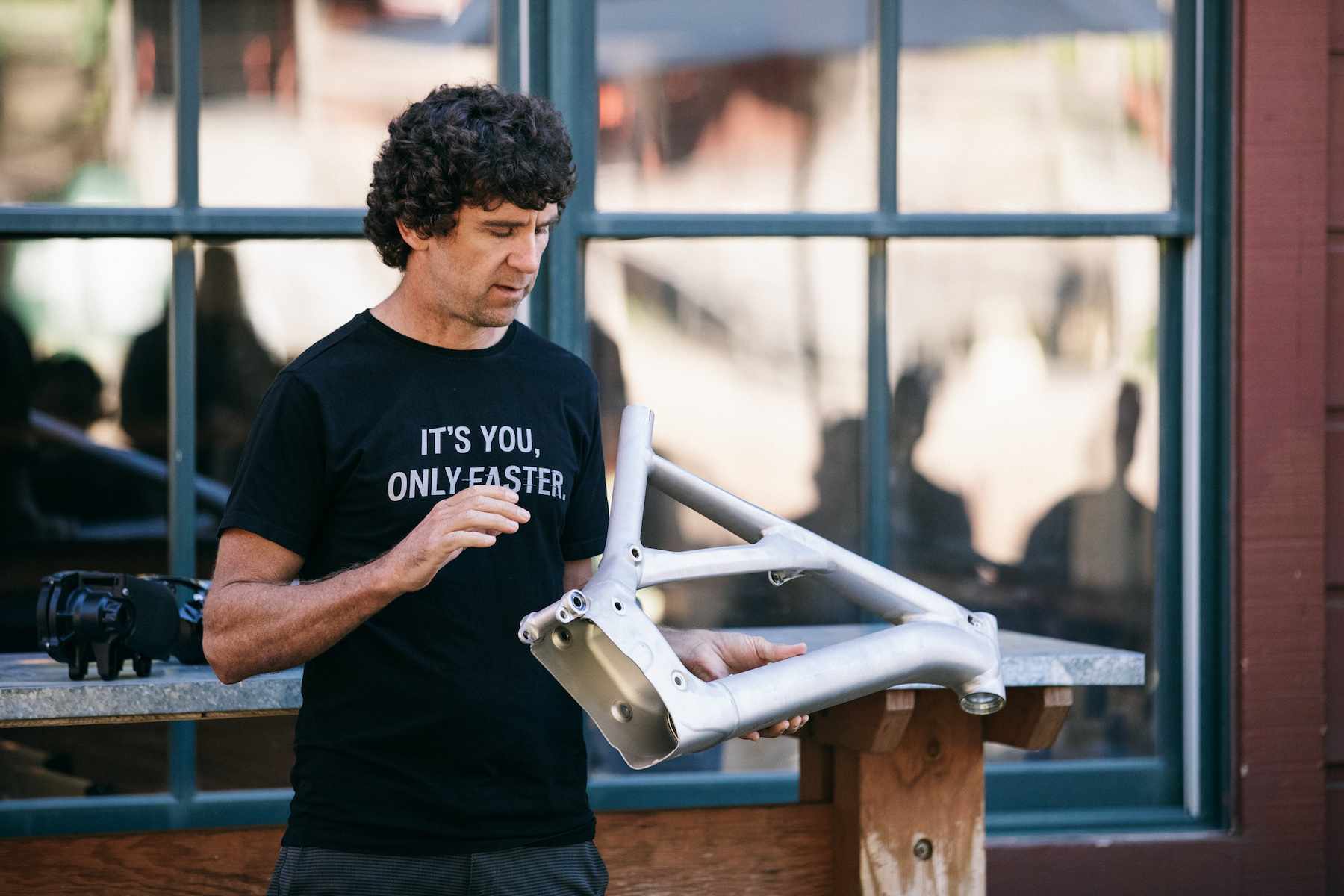
It’s also lighter too, having dropped 1kg off the frame alone. Yes, the frame is literally one kilo lighter. This has largely been achieved with a new downtube structure, which uses a complete tube to house the integrated battery within.
The previous frame relied on an open C-section downtube that the battery clipped onto. And so in order to provide the necessary stiffness while using an open tube, Specialized had to rely on very robust, 3mm thick alloy tubing, which obviously adds quite a bit of weight. The new fully-enclosed downtube is considerably thinner, which allows it to be lighter and stiffer.
Further down, the motor mount has also been refined significantly. Rather than housing the motor inside a heavy and complicated BB forging, the new frame utilises a stamped alloy BB receiver that the motor slides into, with bolts either side securing it in place. As well as utilising material more efficiently, the new stamped housing is also cheaper to manufacture.
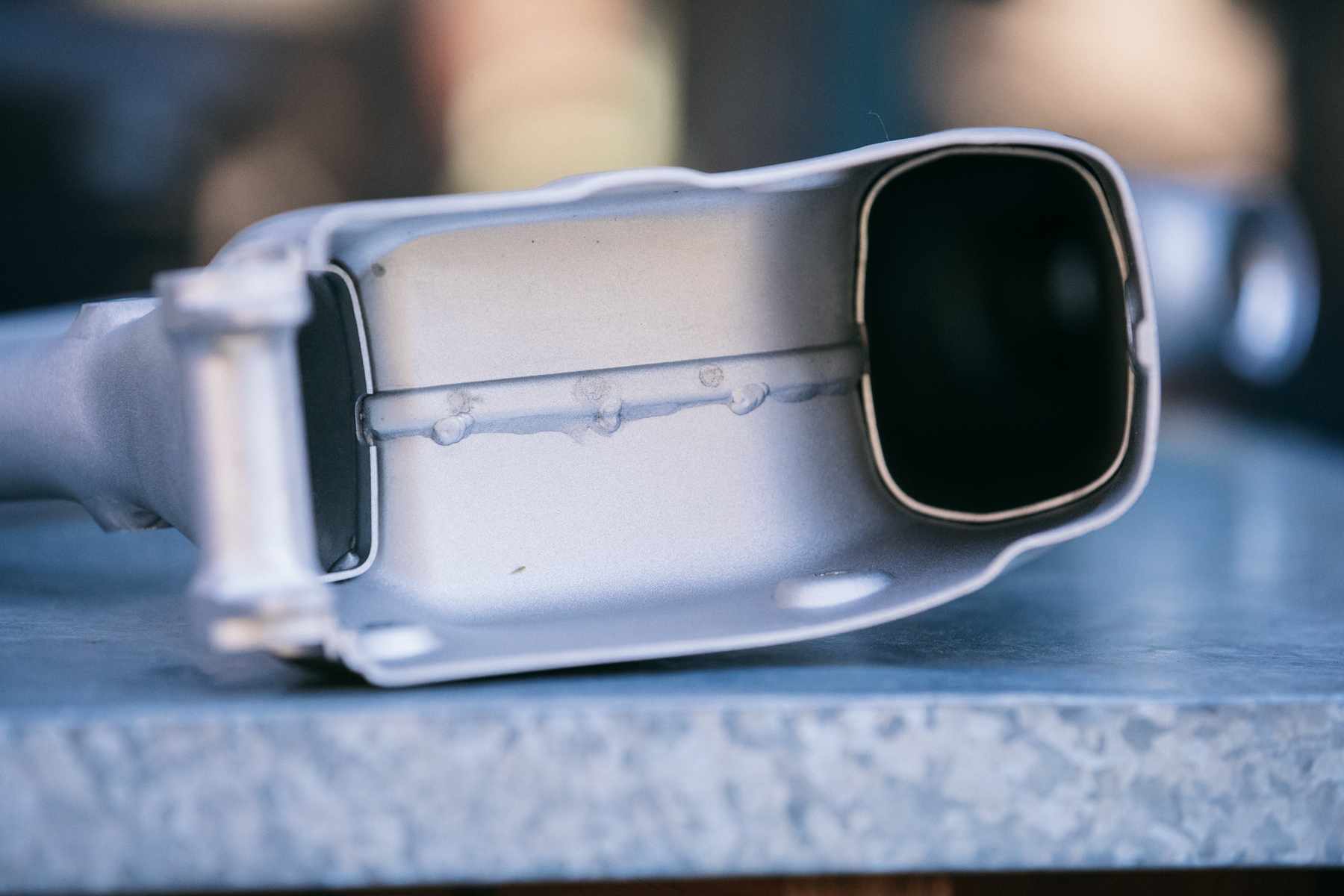
Brose 2.1 Drive System
Whereas the previous Kenevo used the 1.3 generation motor, the 2020 Kenevo is loaded with the same 2.1 motor found in the latest Levo. As well as being 15% smaller in size, the 2.1 motor also gets a magnesium housing that comes with a useful 400g weight saving.
The drive system is manufactured by German brand Brose, but Specialized says all of the software development has been carried out in-house. That is to say that the ‘brains’ of the system are all Specialized, with particular attention spent on integrating the Brose 2.1 motor into the Kenevo’s chassis for a more natural pedalling feel.
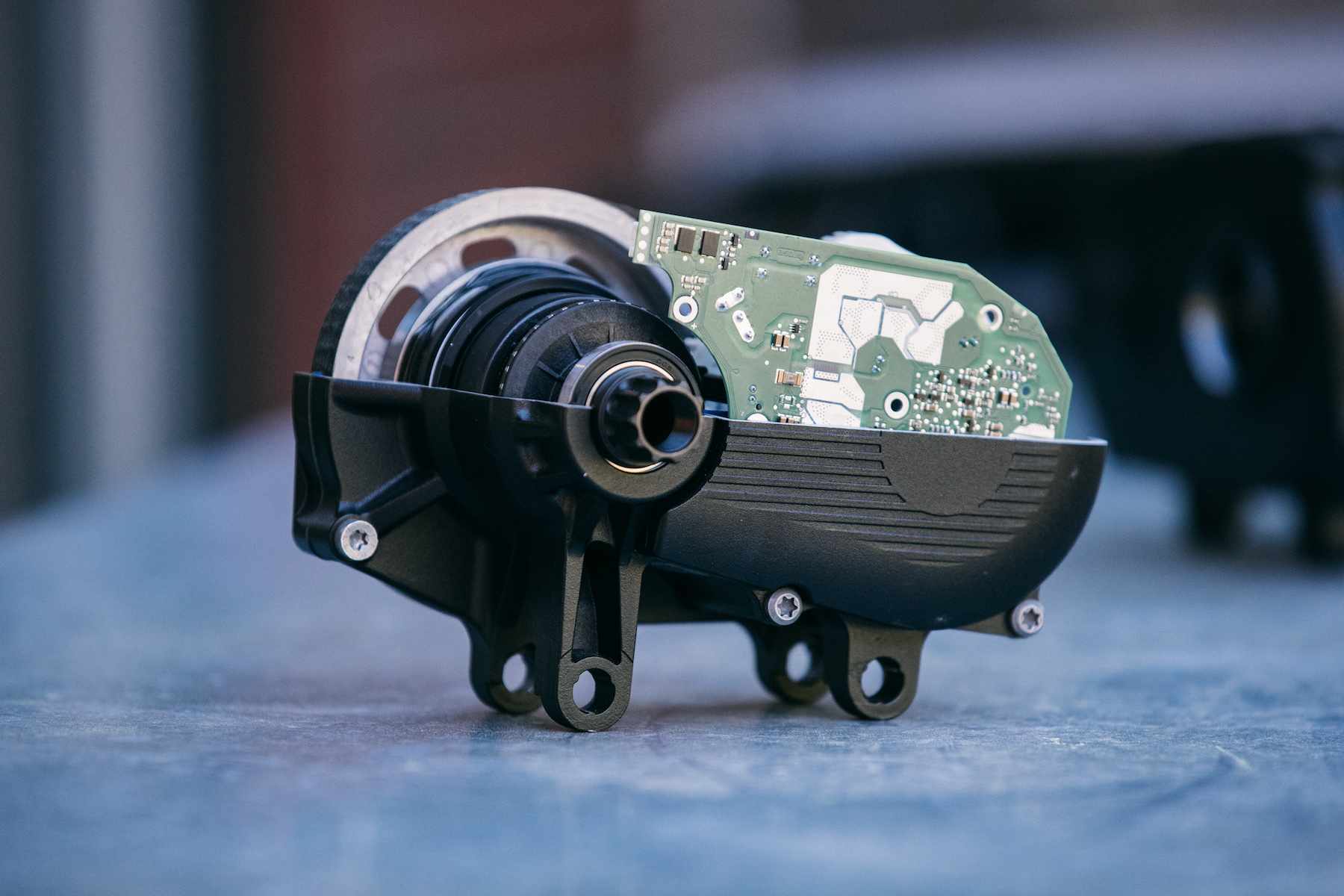
With up to 560 watts of peak power output and 90nM of torque, Specialized says the 2.1 motor is capable of amplifying your pedalling efforts by 410%.
Of course in Europe, it still has the same 25km/h speed restriction. However, once over that speed, the motor completely decouples from the drivetrain so that there’s no extra resistance felt through the pedals. Speaking of the limiter, Specialized says it has bolstered its software to make it harder for riders to chip the Kenevo de-restrict it.
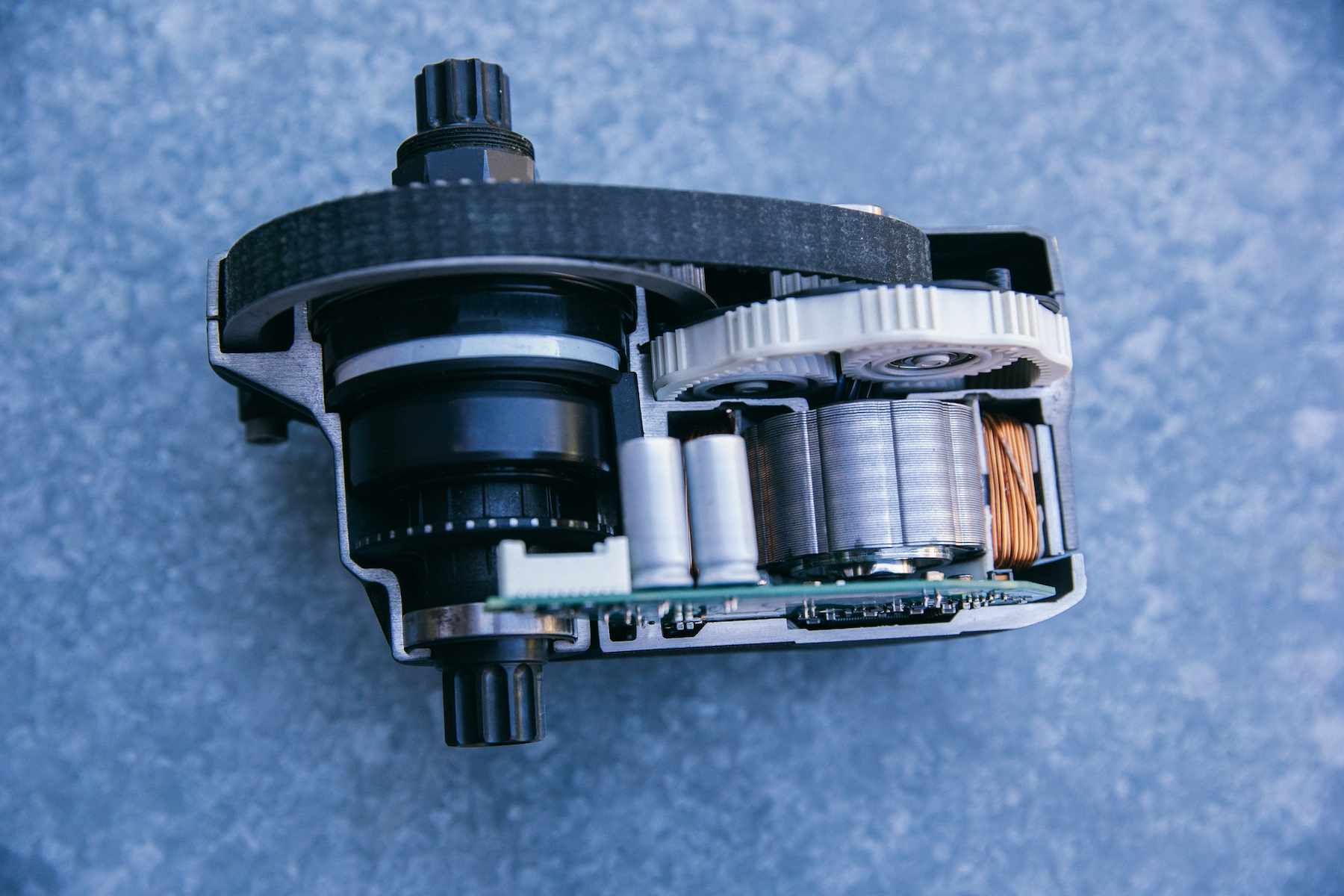
Inside the downtube is the new M2 battery, which comes in two sizes. There’s a 500wh battery in the Comp model (the same size used in the previous Kenevo), and a larger 700wh battery for the Expert model that offers 40% more range.
The integrated battery can be charged on or off the bike. It’ll take around 4-hours for the 500wh battery, and 6-hours for the 700wh battery. If you want to remove the battery, it’s a case of undoing a few bolts and sliding it down and out of the BB area. However, you probably won’t want to carry a spare with you in your backpack, since it’s a pretty damn big battery.
For those wondering, it’s worth noting that the new batteries are not compatible with the old Kenevo, and vice versa.
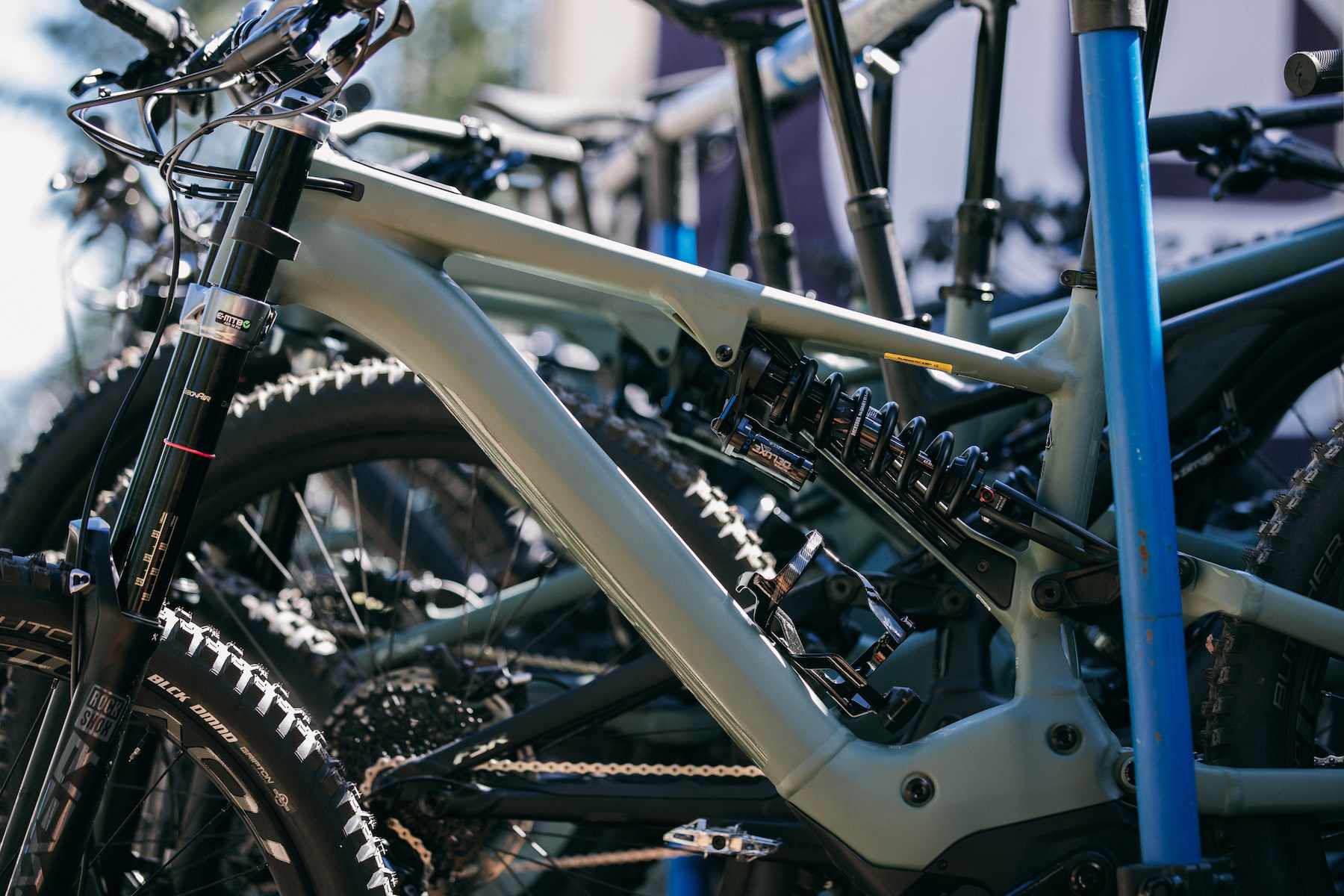
Mission Control Tuning
Like the Levo, the new Kenevo also updates to the Turbo Connect Unit (TCU), which is integrated into the front of the top tube. This houses the system’s brain, and it’s where you’ll find the on/off button and an optical LED fuel gauge that utilises a stack of horizontal lines, with each bar representing 10% of the battery life.
On the left-hand grip you’ll find a discreet remote with three buttons on it. The up/down buttons allow you to scroll between between Eco (1), Trail (2) and Turbo (3) modes. Underneath is the ‘Walk’ button, which is designed to help push the bike along while you’re walking it uphill.
Once turned on, the TCU then pairs wirelessly to your smartphone via Bluetooth or ANT+, where Specialized’s own Mission Control app then offers you the ability to fine-tune power and range.
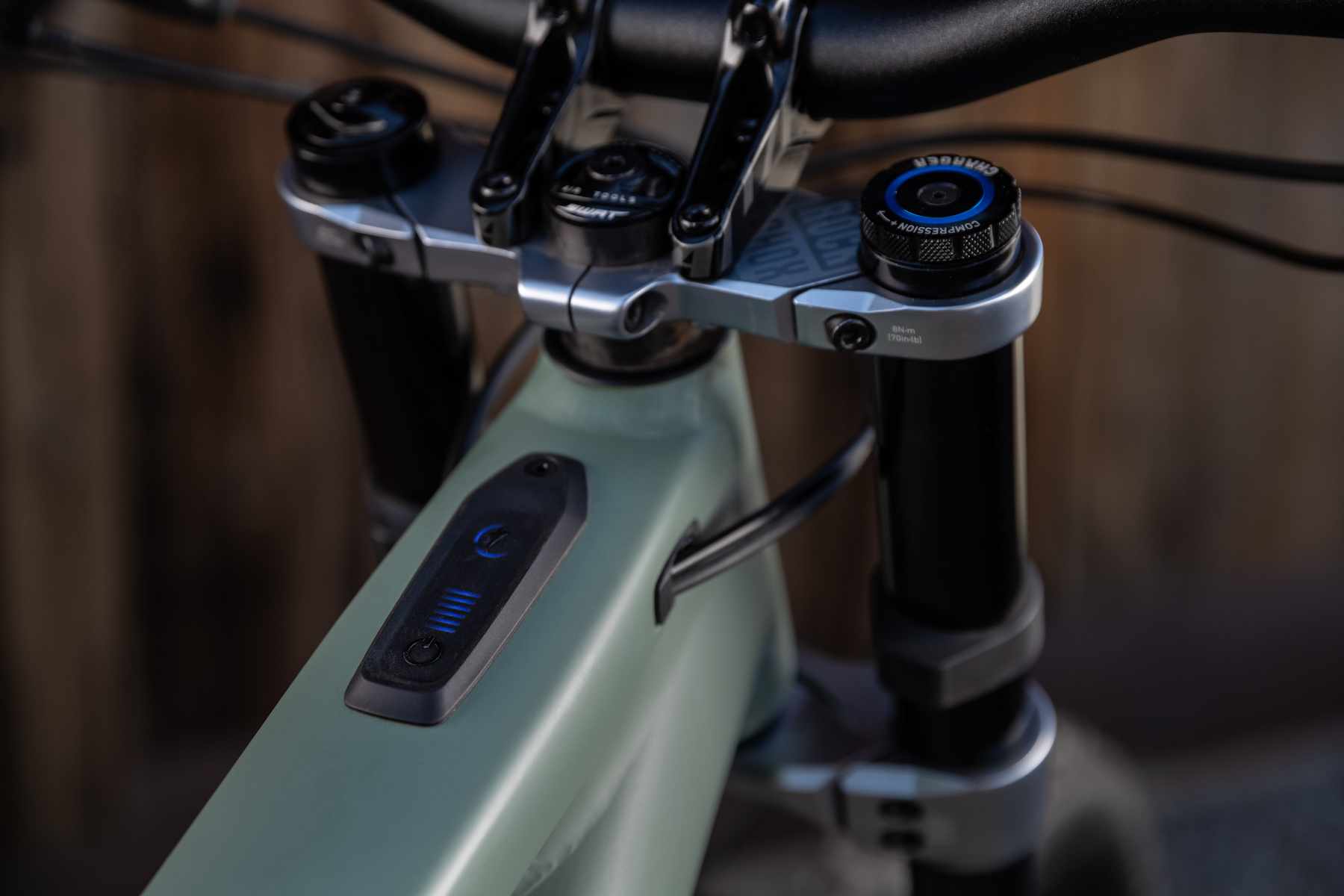
For example, if you’re finding the assist level to be a little too much, you can limit the peak power output for each mode, which will help you eek out more range from the battery. Alternatively, tell the app how long your ride is going to be, and the system will automatically meter the assist levels to ensure the battery lasts for the duration of your ride.
On top of this, you also have the ‘Shuttle Mode’, which when selected, will see the motor giving you maximum power output more easily with less pedalling force – ideal for those lazy riders shuttling up fireroads who want to get to the top of the run as quickly as possible.
And for those who’d prefer not to be distracted by LEDs, there’s a ‘Stealth Mode’, which will keep the system on while turning all the LEDs off – likely something that night riders will appreciate.
While I quite like how clean and tidy the cockpit is with the Kenevo, for riders who want all the information at their fingertips, you can add on the £75 Turbo Connect Display – a small computer that sits on the bars to give you basic metrics like riding speed, distance and ride time, while also telling you how much juice you’ve got left in the tank, and what mode you’re riding in.
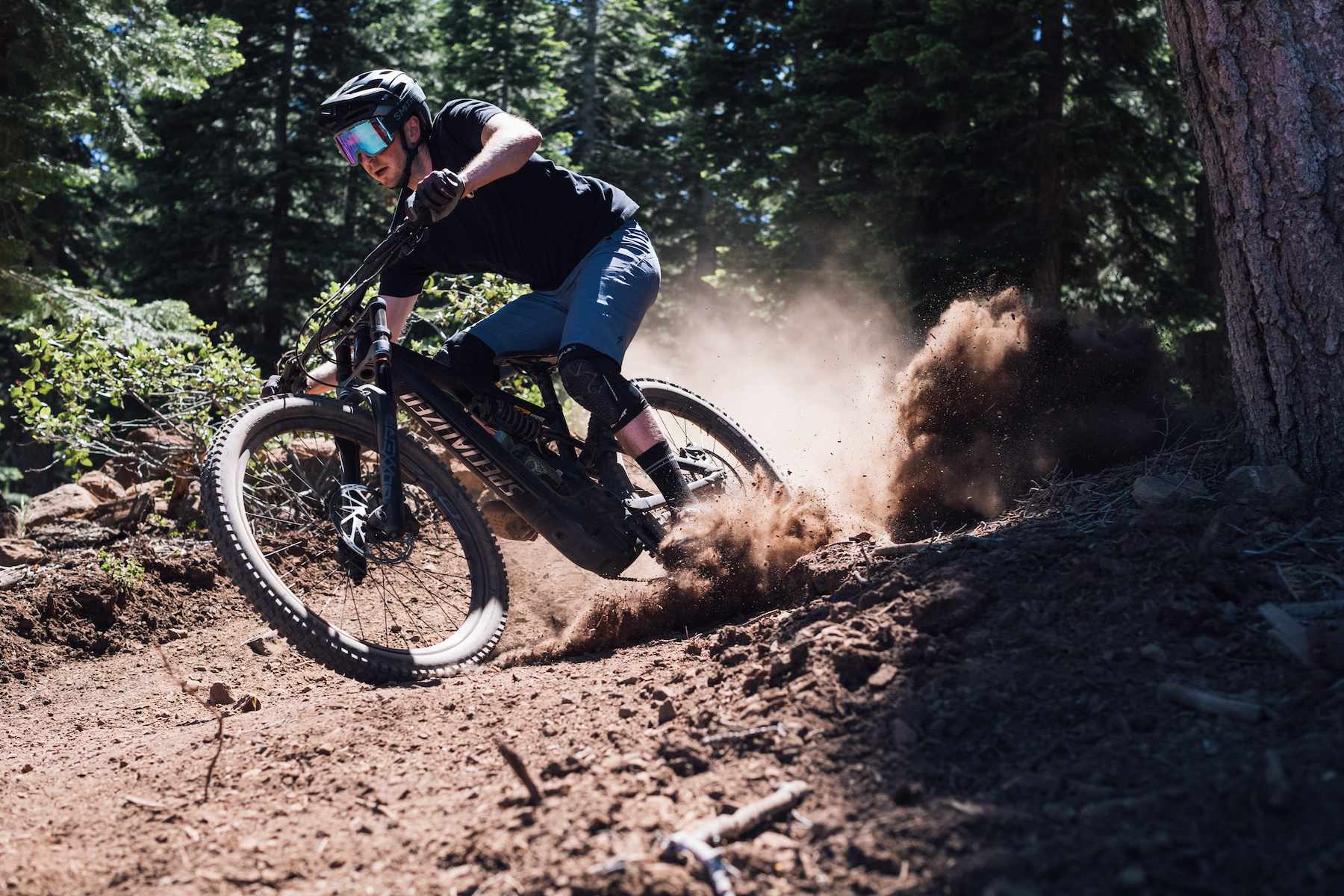
DH-Ready Geometry
Specialized has rolled out some geometrical updates with the new Kenevo, which gets a 1-degree slacker head tube (now 64°) and a 2-degree steeper seat tube angle (now 77°).
Reach has increased massively, with an extra 40mm per size on average. And like the latest Enduro and Demo models, the Kenevo moves to the S-Sizing system, with S2, S3, S4 and S5 sizes replacing the traditional Small, Medium, Large and X-Large sizes.
Why the change? Specialized wants riders to choose their frame based on the reach they prefer, and not on their saddle height. To facilitate this, seat tubes have gotten much shorter, which provides more flexibility for up and down-sizing, while also improving compatibility with modern long-stroke dropper posts. Head tubes have also gotten shorter, and Specialized is encouraging riders to dial in their stem/bar height by making use of the included headset spacers.
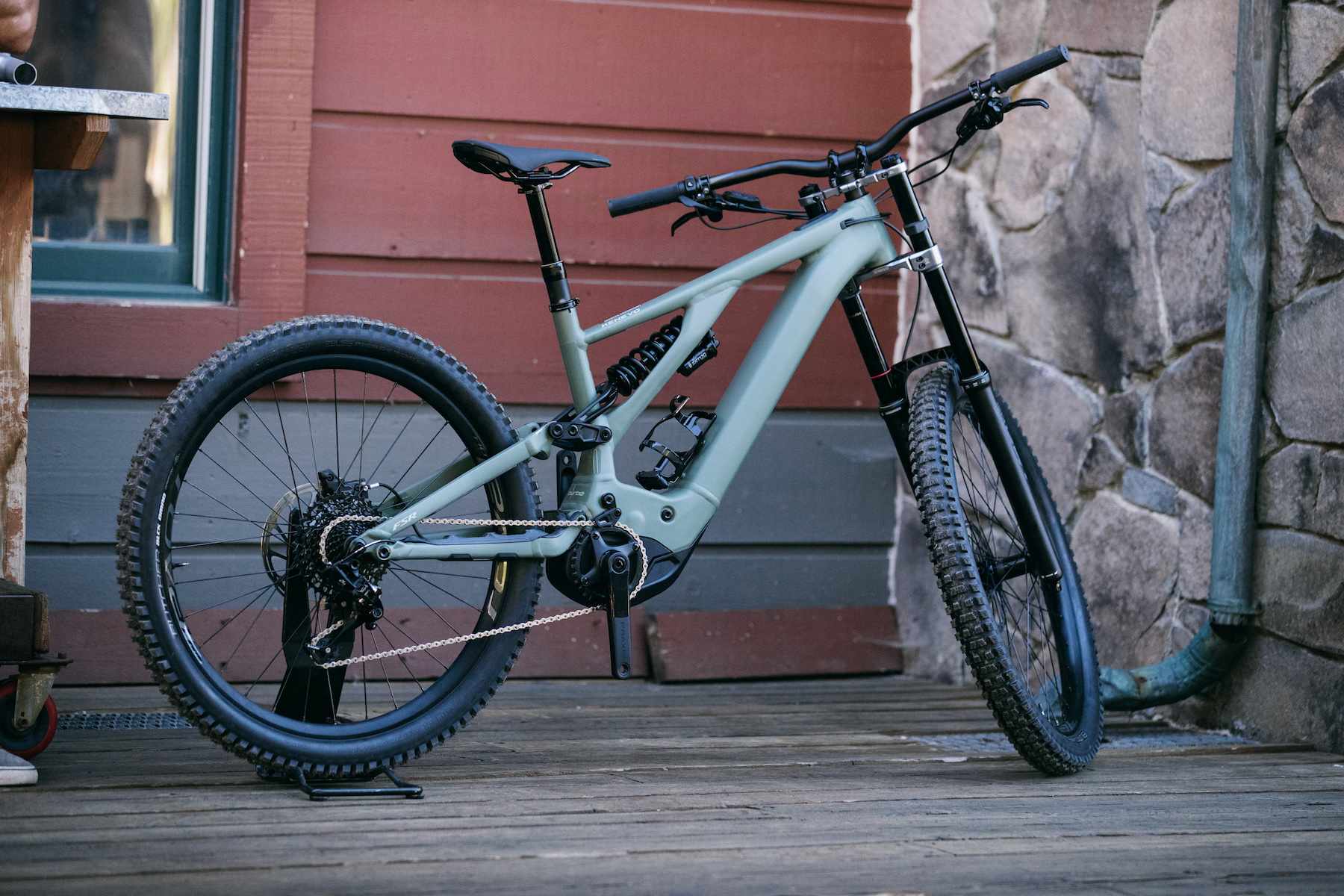
For those who like to fine-tune geometry, there’s adjustability built into the Kenevo’s chassis. A small stainless steel insert inside the lower shock mount allows riders to flip between High and Low settings, which changes the head angle by half a degree, while also raising or lowering the BB height.
Along with the generous tyre clearance and bigger fork capability, there’s certainly options for switching up the Kenevo’s style.
The Lineup
There will be two models of Kenevo coming into the UK for 2020; the Expert (£6,999) and the Comp (£4,999).
Both models make use of the same alloy frame and 2.1 drive system, though the Expert receives bigger 700wh battery with 40% more range.
Whereas the Expert gets the RockShox suspension package with the dual-crown Boxxer up front though, the Comp gets a cheaper Marzocchi setup, which includes a 180mm travel Z1 single-crown fork. It’s just like 2005 all over again!
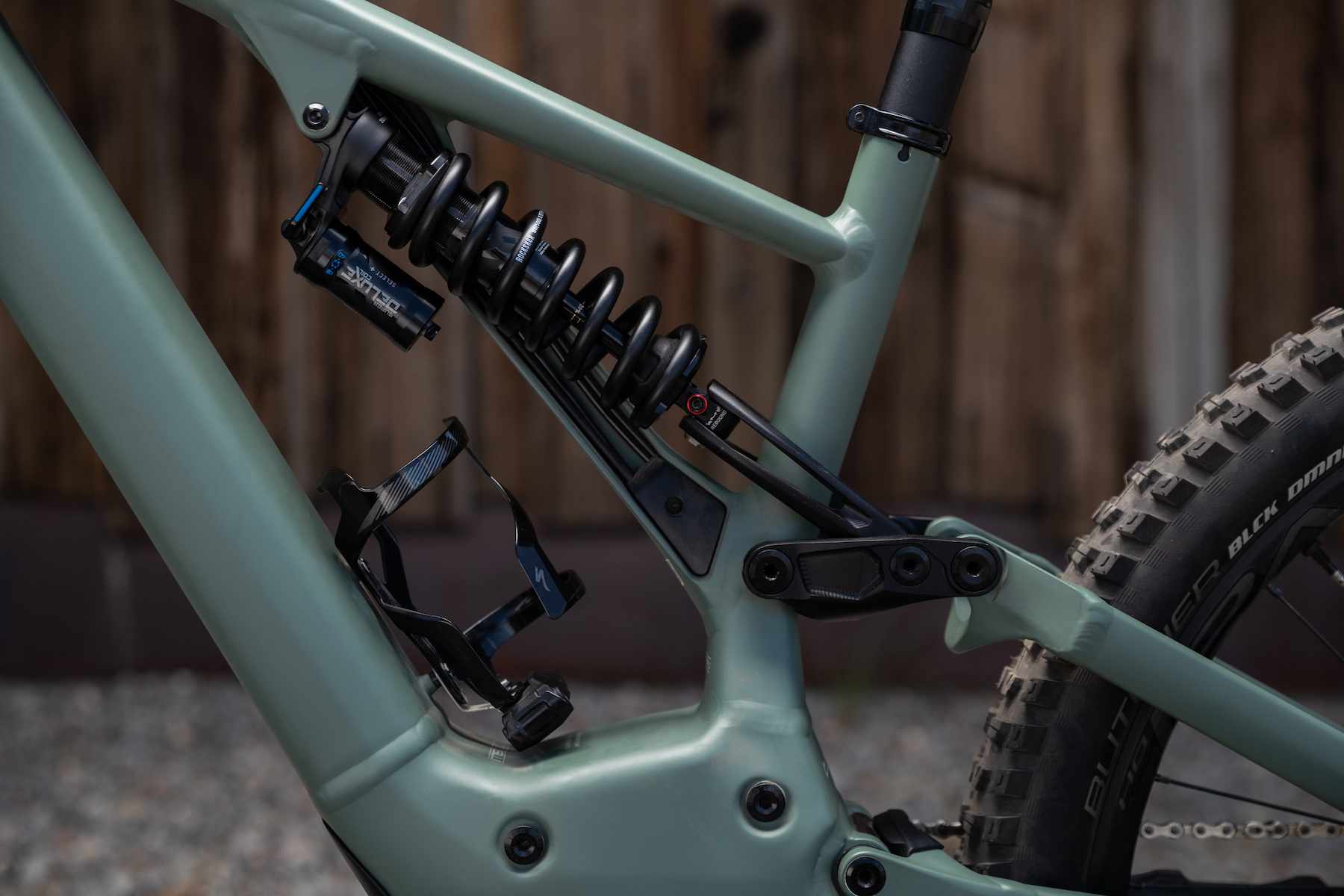
Specialized has updated its DH wheels for the latest Kenevo, which feature 2Bliss ready alloy rims with a 30mm internal width. They now get 32 J-bend spokes front and rear for added strength and durability, and they’re laced to a Stout front hub and a DT Swiss rear hub. The wheels are shod with 2.6in wide Specialized Butcher BLK DMND tyres.
Both models receive 125-160mm stroke dropper posts, along with 4-piston brakes with proper 200mm rotors front and rear – an essential for a heavy e-MTB like the Kenevo.
Speaking of weight, while the frame has gotten lighter, Specialized has added more robust components elsewhere that sees the Kenevo Expert coming in about the same weight as its predecessor. According to Specialized, a Medium sized Kenevo Expert comes in at 24.58kg (54.1lb), while the Kenevo Comp weighs in at 23.63kg (52lb).
You’ll notice that like the Levo range, Specialized has chosen to spec SRAM 1×11 drivetrains on the Kenevos. This is because in its 12-speed Eagle range, SRAM only approves the 616g NX cassette for e-MTB use, and Specialized prefers not to run such a heavy cassette. And since Shimano is taking its sweet time to roll out its 12-speed alternatives, Specialized has stuck to the proven SRAM 1×11 drivetrains for the time being.
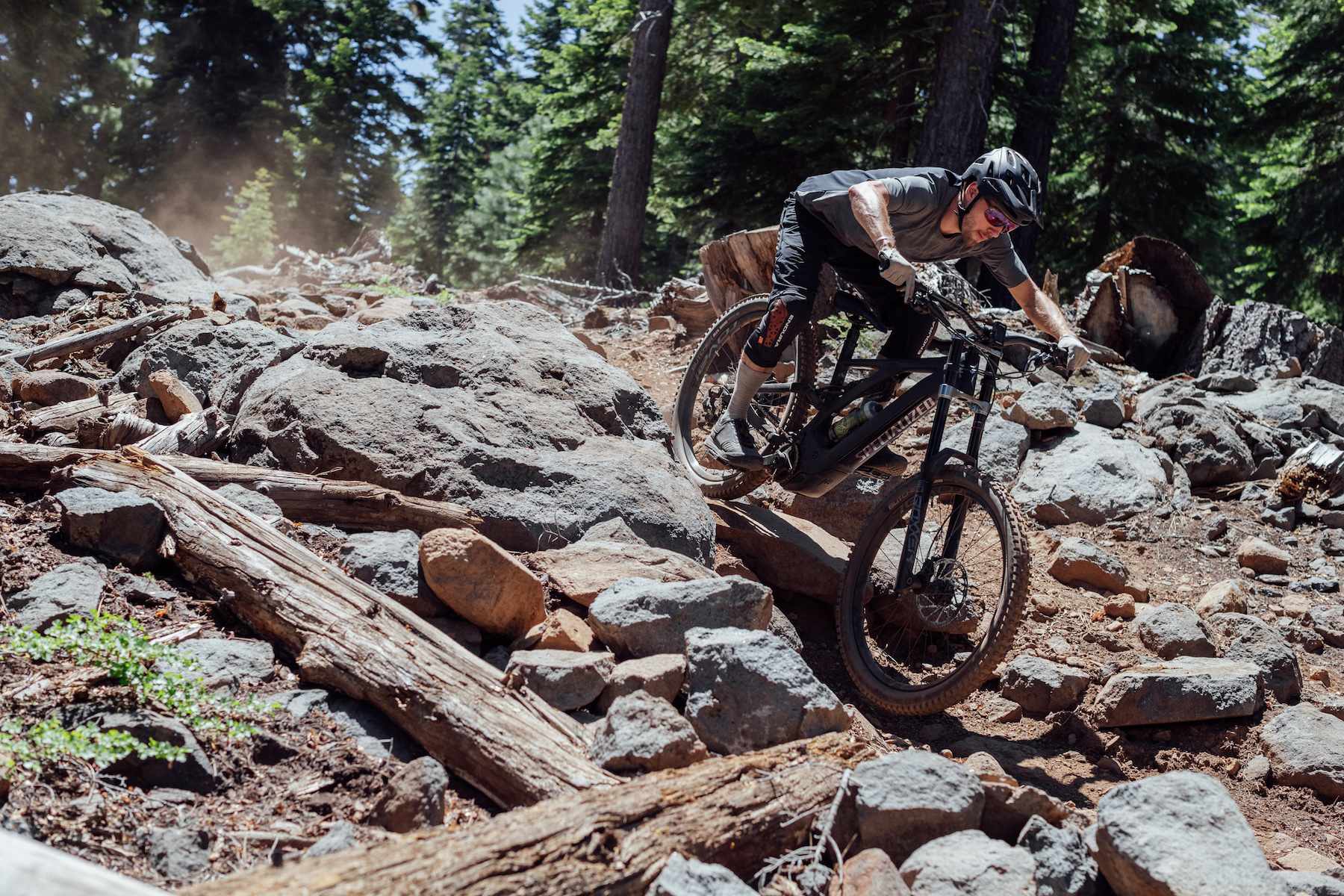
2020 Specialized Turbo Kenevo Expert First Ride Impressions
Thanks for being a Singletrack Member. Enjoy the rest of this review
For the launch of the 2nd generation Kenevo, we spent an afternoon of riding the trails at the Northstar Bike Park in Lake Tahoe, California. I was aboard the blacked-out Expert model, and while it certainly looks pretty mean with that big Boxxer, I must say I was quite envious of the alternate matte green paint job some of the other journos were riding.
While getting setup on the bike, I realised that it had been a while since I’d ridden a dual crown fork, and it’s also been quite a while since I’ve ridden an e-MTB. The last one I rode was a Pivot Shuttle, which aside from coming with a carbon frameset, a different suspension design and the Shimano E8000 drive system, also clocks the scales nearly 10lb less than the Kenevo.
The Kenevo’s weight doesn’t totally smack you in the face though. Well, until you try to pick it up, that is. I can see a few red faces and swear words in the future for UK-based Kenevo owners who have a few styles and gates along their regular trail loops.
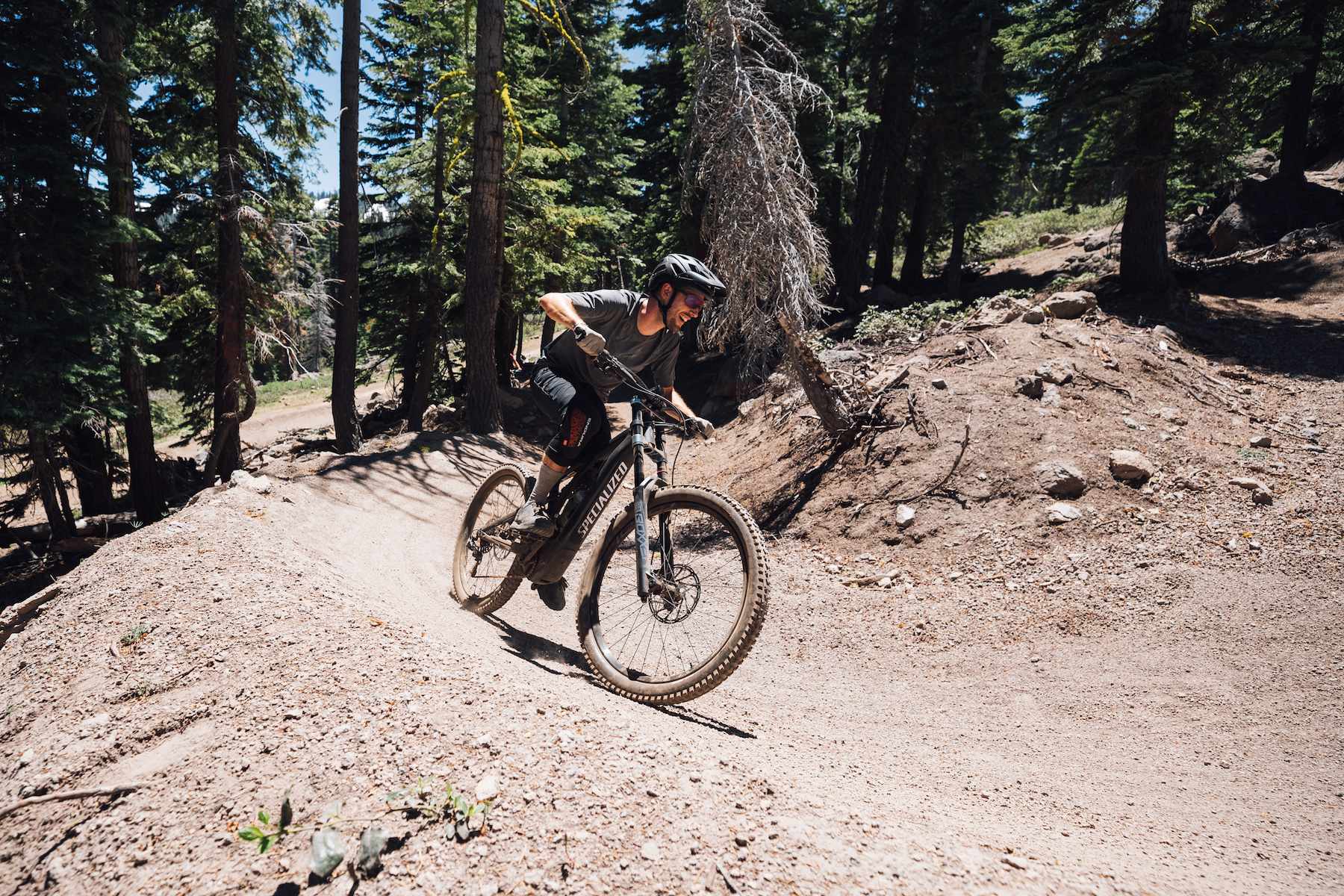
The immediate aspect I picked up on the new Kenevo is just how quiet the latest Brose motor is. It really isn’t until you’re in the higher powered setting that you can hear much of a whine from the belt-driven motor, and even then it’s pretty darn quiet – certainly a lot stealthier than an equivalent Bosch or Shimano motor.
It’s also very smooth, with incredibly subtle torque delivery that – as claimed by Specialized – feels quite natural, with no apparent surges in acceleration.
I initially started climbing in the Eco mode, while everyone else yahoo’d in Turbo. This provides a small amount of assist, which meant I still got a pretty hard and sweaty workout trying to keep up with my riding companions. It also obviously extends out the battery life, which Specialized says can vary anywhere between 1-5 hours depending on the gradient, the level of assist selected, and the weight of the rider.
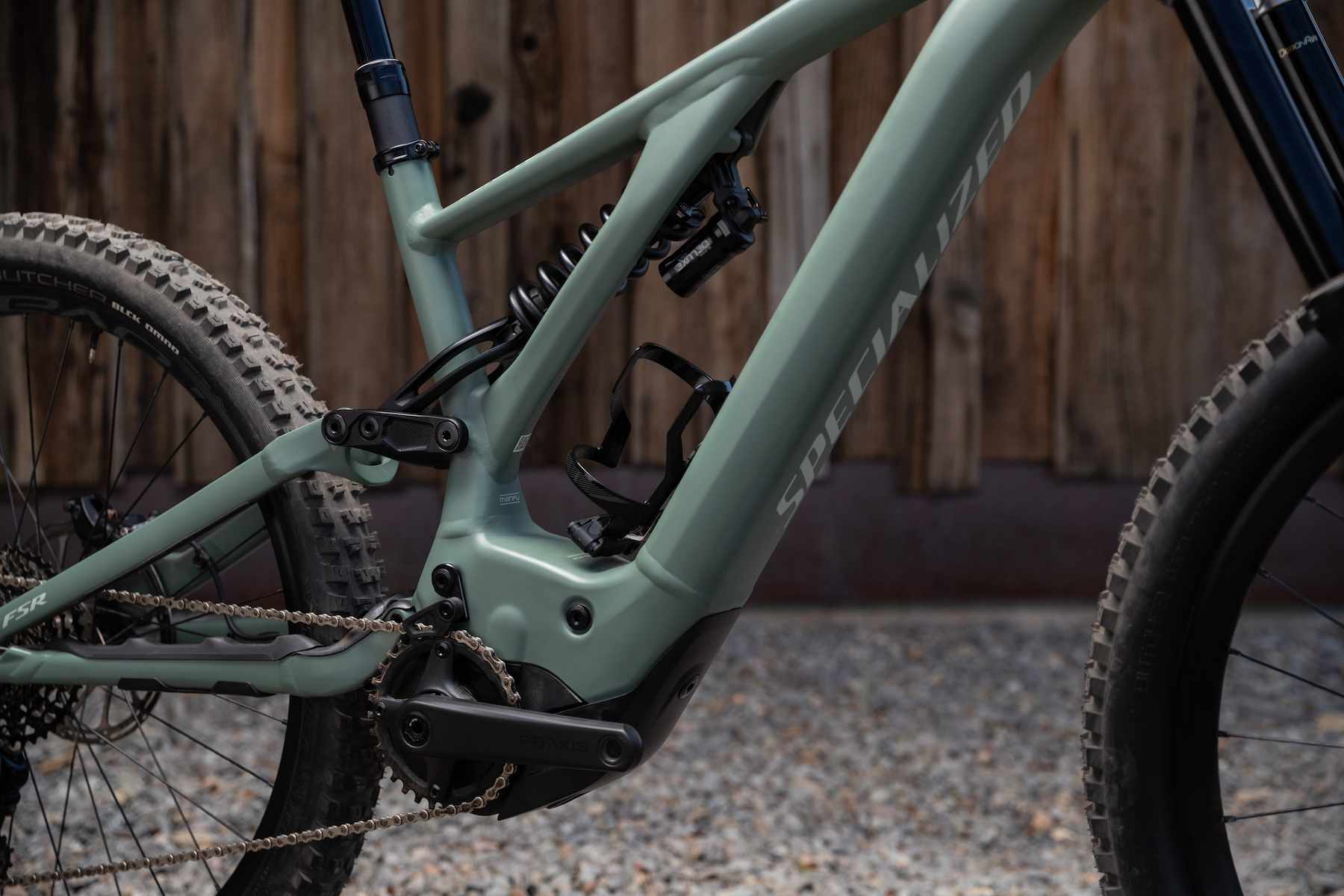
The steeper seat angle is really noticeable, which helps to push your weight forward while moving your pedalling position further over the pedals. Along with the long top tube, wide bars and superb Specialized saddle, it’s a very comfortable bike to climb on.
I did occasionally hit full-lock on the dual crown fork on some of the really tight uphill switchbacks, but it wasn’t nearly as big of a problem as I expected. It’s really only when you’re off the bike and pushing it around in tight manoeuvres that the dual crown fork becomes annoying.
Despite the newly slackened geometry, the smaller 27.5in wheels were easier to thread around obstacles, which I found particularly noticeable having ridden the 29in Enduro only the day before. And with plenty of traction on offer, I found the technical rock climbs to be surprisingly doable on the heavy Kenevo.
I will also say that the way the Brose motor disengages is very subtle – it is noticeably smoother than the last Shimano STEPS motor I last rode. Rather than the motor’s assistance cutting off completely, its behaviour is much more like a dimmer switch. The result is less jerkiness from the motor when it engages and disengages, and that makes it feel a lot more natural while you’re pedalling on the techy stuff.

That said, I did end up clipping pedals quite a lot, even with the shorter 165mm crank arms. The rear suspension is quite soft and supple on the Kenevo, and that sees the pedals sagging close to the ground. Pedal strikes are common, because if you don’t keep the power down on the tech climbs, the heavy Kenevo will decelerate quickly and you’ll stall.
I suspect that the Kenevo is more likely to spend its time pedalling up bitumen and dirt fireroads rather than technical singletrack though. After all, this is a bike that’s destined to bomb steep and technical downhill trails in the woods or at the bike park. The more adventurous backcountry riders out there are more likely to gravitate towards the do-it-all Levo.
At 175cm tall, I was put aboard the S3 size. It’s suitably long in the cockpit, and plenty spacious with the big 800mm wide bars and stubby direct-mount stem. Along with the slack 64° head angle, the Kenevo pushes the front wheel way out in front of the rider, giving a very stable and sure-footed stance on the descents.
Despite its noisy internals that I could hear sucking and spitting oil within, the Boxxer fork was a terrific performer with a very supple action. It has fantastic torsional rigidity too, and that gives you a tonne of confidence, knowing that the front of the bike is capable of sucking up some pretty mega hits without upsetting the front wheel too much.
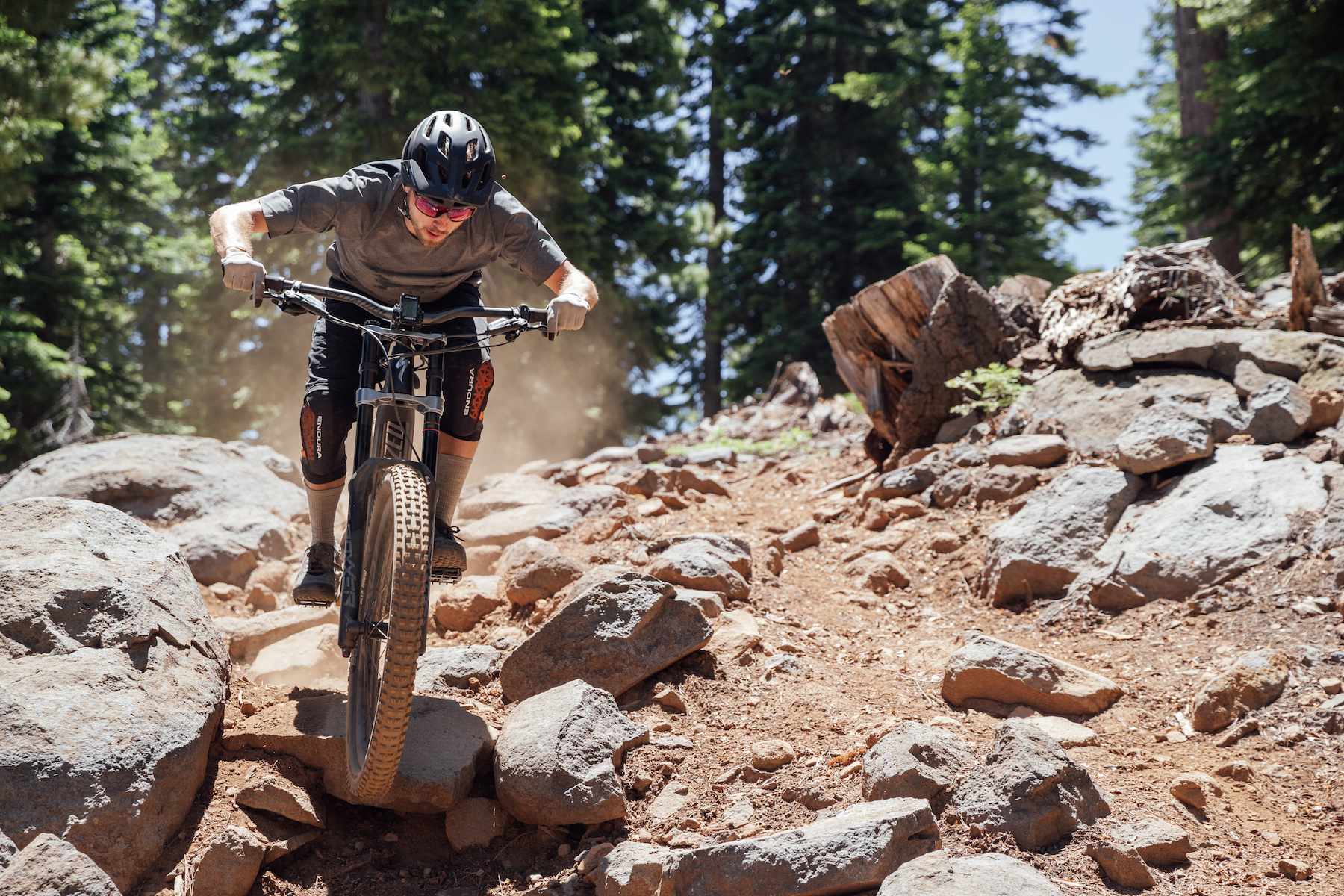
While the Kenevo basically rides like a full-blown downhill bike, I did find the suspension wasn’t quite as good as the Enduro we’d ridden the day before. The FSR arrangement on the Kenevo supposedly provides a similar wheel path and rate to the Enduro, but I found there to be more feedback through the pedals on the Kenevo.
This was noticeable while straight-lining a high-speed descent right at the bottom of the mountain, where the Enduro absolutely floated over all of the braking bumps and washboard ripples. In comparison, I could feel more vibration and feedback coming through the pedals on the Kenevo.
Now, it isn’t that the Kenevo is rough – it’s still a very supple and stable bike. It’s just that the new Enduro’s rear suspension is better – something I really only noticed since I’d ridden the Enduro on the same trails literally the day before.
Unfortunately the complexity of the Enduro’s new suspension platform basically made it impossible to try and integrate a motor and battery into, which is why the Kenevo’s back end is more akin to the shorter-travel Levo. So there you go.
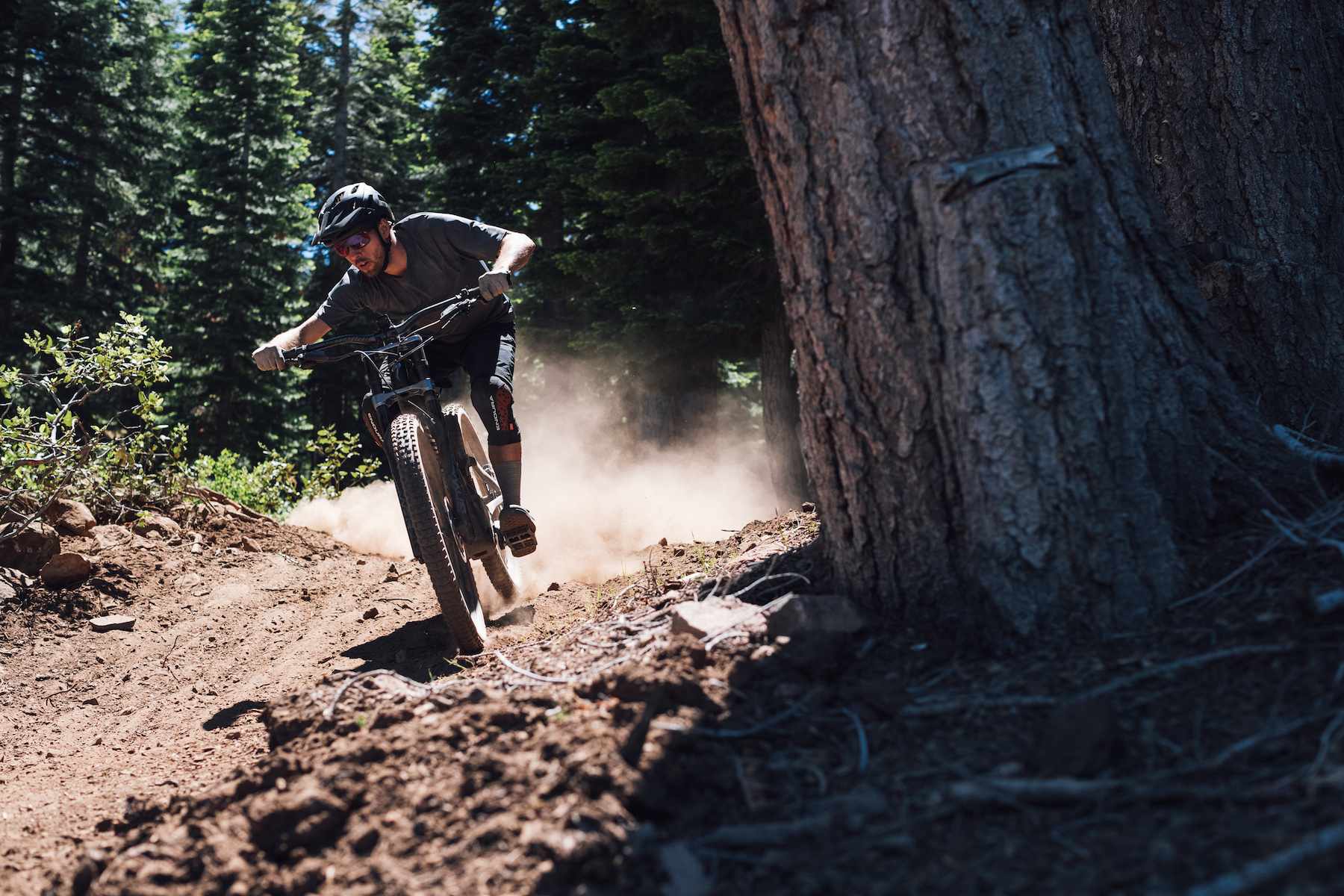
Early Verdict
Having only spent an afternoon riding the new Kenevo, there’s only so much I can say about its performance. That said, early impressions are very positive. The 2020 Kenevo is certainly a big step up from the previous model, with more competent geometry that offers improved handling and efficiency on both the climbs and the descents.
The new Brose 2.1 drive system is quieter and smoother than its predecessor, and with all the tuning options in the Mission Control app, there’s a load of scope for getting it setup to your preferences and terrain.
Combined with the updated build package, the Kenevo is more capable and shred-worthy than ever. All-day singletrack hunters will still likely veer towards the already-very-capable Levo. But for bike park enthusiasts and old-school downhillers who are finding it harder and harder to rope in shuttle buddies, the Kenevo is your self-shuttling ticket to plough-town.
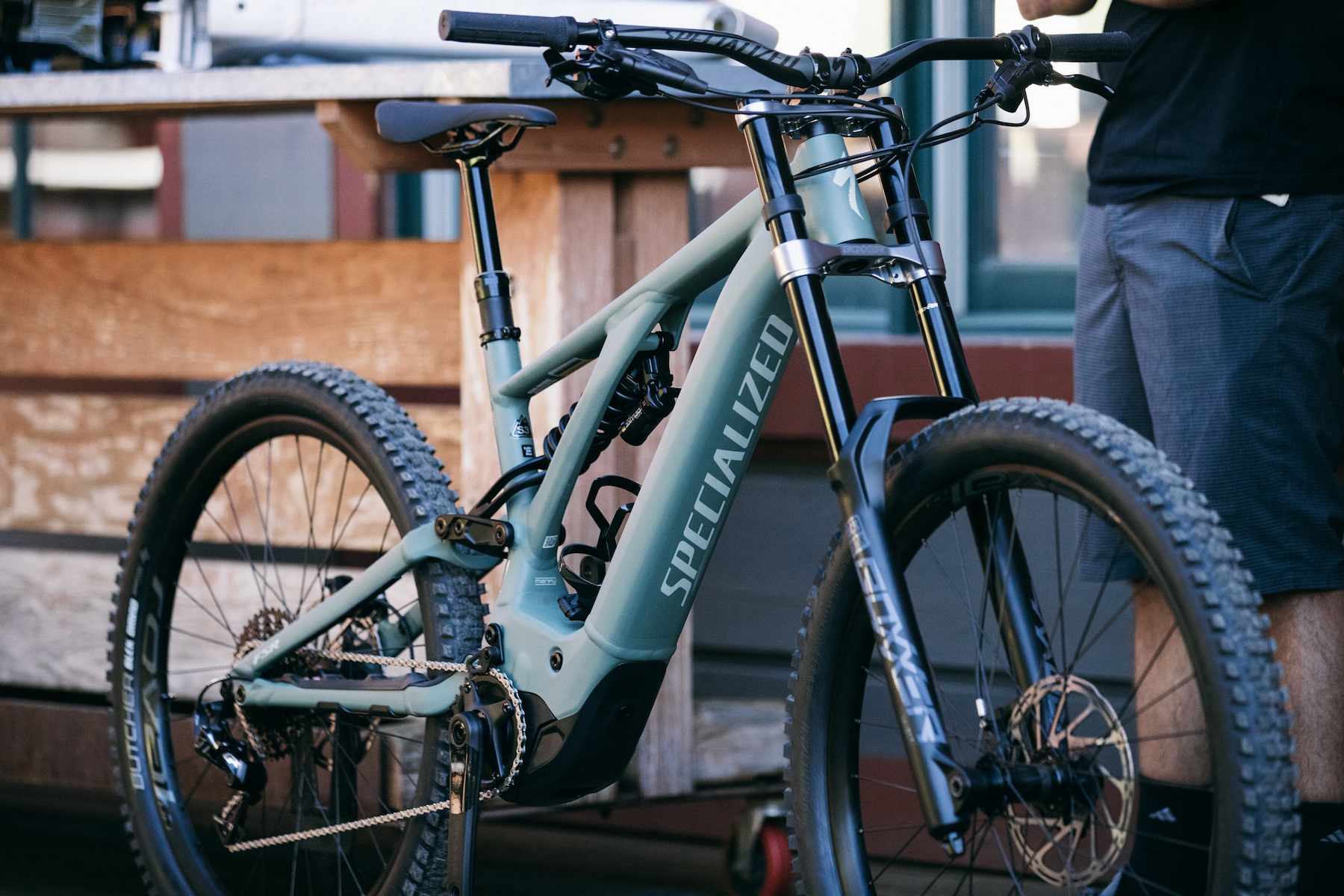
Disclaimer
Wil’s fights & accommodation for this trip were covered by Specialized

